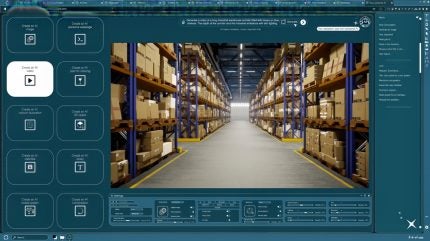
Packaging design has always been a critical component of product marketing, influencing consumer behaviour and brand perception.
In recent years, artificial intelligence (AI) has emerged as a transformative force in this field, enabling companies to predict consumer preferences and optimise packaging aesthetics with unprecedented precision.
By leveraging machine learning, deep learning, and data analytics, AI is reshaping the way packaging is conceptualised and developed.
This article explores how AI-driven algorithms are influencing packaging aesthetics, the role of predictive models in forecasting consumer reactions, and the broader implications for the packaging industry.
AI-driven algorithms and packaging aesthetics
Traditionally, packaging aesthetics were determined by human designers based on market trends, artistic intuition, and consumer feedback. However, AI-driven algorithms are now enhancing this process by analysing vast datasets to generate visually compelling designs tailored to specific audiences.
Machine learning models, trained on historical packaging designs and consumer engagement data, can identify patterns that resonate with target demographics.
These algorithms assess factors such as colour schemes, typography, imagery, and material choices to optimise packaging appeal. AI tools like generative adversarial networks (GANs) can even create entirely new designs by blending elements from successful packaging concepts.
This results in packaging that not only aligns with brand identity but also maximises shelf appeal.
Additionally, AI can conduct real-time A/B testing on packaging variations by simulating consumer interactions. By analysing eye-tracking data, sentiment analysis, and engagement metrics, AI can determine which design elements are most effective in capturing consumer interest.
As a result, brands can make data-driven decisions rather than relying on subjective judgement, ensuring packaging designs that are both aesthetically pleasing and strategically optimised.
Predictive models for consumer reactions
One of the most groundbreaking applications of AI in packaging design is its ability to predict consumer reactions before a product even reaches the market.
Predictive analytics leverages AI to assess potential customer responses based on historical purchasing behaviour, social media sentiment, and psychographic profiling.
AI-powered sentiment analysis tools scan online discussions, reviews, and social media posts to gauge public opinion on different packaging styles. This enables brands to identify emerging trends and anticipate shifts in consumer preferences.
For example, if minimalist packaging with eco-friendly messaging is gaining traction, AI can highlight this trend, allowing companies to adapt their designs accordingly.
Moreover, AI-driven consumer preference models utilise deep learning to predict purchasing behaviour based on previous interactions with similar products. These models analyse variables such as packaging shape, size, material, and visual elements to determine their likelihood of success.
By leveraging this predictive power, brands can refine their designs before launching them, reducing the risk of costly redesigns and failed product launches.
Retailers also benefit from AI-driven predictive packaging models, as they help optimise shelf placement and enhance customer engagement. Supermarkets and online retailers use AI to test how different packaging designs perform in various environments, ensuring that products stand out in both physical stores and e-commerce platforms.
This approach enhances the shopping experience and increases the likelihood of conversions.
The future of AI in packaging design
The integration of AI into packaging design is still in its early stages, but its potential is vast. As technology continues to evolve, we can expect even more sophisticated AI applications in this field.
One promising advancement is AI-powered customisation, where machine learning tailors packaging to individual consumers.
Personalised packaging, driven by AI, can adjust elements such as colours, imagery, and messaging based on customer preferences and previous purchasing behaviour. This not only enhances brand loyalty but also creates a more engaging consumer experience.
Additionally, AI is playing a pivotal role in sustainability efforts. As consumers become more environmentally conscious, brands are under pressure to reduce packaging waste. AI can optimise material usage by designing packaging that minimises excess while maintaining durability and functionality.
Machine learning algorithms can also recommend biodegradable or recyclable materials, ensuring that packaging aligns with eco-friendly initiatives.
Furthermore, AI-driven automation is streamlining the packaging design process, reducing the time and cost associated with traditional methods.
Design teams can use AI-powered software to generate and test packaging concepts rapidly, accelerating the development cycle and allowing for more frequent product iterations.
Ultimately, AI and predictive analytics are revolutionising packaging design, offering brands an unprecedented ability to create visually compelling, consumer-centric, and sustainable packaging solutions.
As AI continues to advance, businesses that embrace these technologies will gain a competitive edge, ensuring their packaging remains both relevant and impactful in an ever-evolving marketplace.



